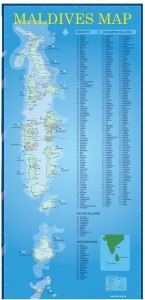By Minh Le Do

The traditional elegant, natural friendly Maldivian housing architecture before taking a leapfrogging change in design before modernization. Builders Maldives. 2010
The history of planning in the Maldives is quite unique because it does not have an abstruse history. Despite a short period of British protection, the country has always been an independent state throughout its years of existence.
The British acquired the Maldives for its strategically important location on the major marine routes of the Indian Ocean, which strengthened the British domination in Southern Asia in the 19th century. However, to continuously uphold the Maldives as a British colony would have cost the British financially a lot more than what they could have generated from this colonized country. Thus, they came up with the most cost effective method: controlling the foreign affairs of the Maldives and not bothering about its domestic sovereignty or infrastructure. As a matter of course, the British barely left any administrative or cultural impact on Maldives as they did in India (Metz 2004).
Maldives was solely a military base to hold the army instead of a country where natural resources and labor force can be exploited. In 1956, the Royal Air Force began developing its airfield on Gan Island and signed a 100 year lease at £2000 per year. Shortly after that, the Maldivian government managed to shorten the contract and increased the lease payment to £100, 000 a year with a grant of £750,000 to finance the country’s development projects (Metz 2004). Upon the last rent payment in 1976, the British left Maldives and returned the islands to its independent state.
Xavier Romero-Frias, a Spanish writer who has lived in Maldives for over 13 years, described Maldives as a mystical “autochtonous” culture (Romero Frias 2003, 2) where the indigenous people treated their country as an isolated and local matter, in terms of both time and space. For example, when being asked about the Buddhism’s impact on the Maldives, the Maldivian scholars asserted that such distant event had definitely “faded into oblivion” (Romero Frias 2003, 3). They rejected the connection between the ancient Buddhist traits with the people who live in the present. There is a distinct separation between those in the Buddhist era and the people in the current Muslim era.
As you can see, instead of acknowledging and continuing the heritage, modernity of the Maldives chose to reject their rooted past. By burning bridges with its precedent stories and events, the Maldives blindfolded its own people. As a result, the Maldivian natives did not know when their modernity started, and shifted such burden to the outside observers who decided the time and formation of modernity on the Maldives.
I would argue the modernity in the Maldives started in the early 1970s, when Sri Lankan market – the Maldives’ main export of dried fish – collapsed. Such critical crash in the fishing industry, considered the main sector at the time, ultimately led to the development of Maldives’ tourism industry in order to boost the growth of the economy. In addition, the country adopted the global technological advancement, i.e. the modern telecommunication. Mobile phones and Internet became widely used in the 1990s. Electricity, as well as basic social services, such as hospitals and high schools, are now available in the capital as well as the outer atolls.
However, during the 1980s, the Maldives Islands went through a profound transformation where both the new Islam movement and urban modernization simultaneously acted upon the country. Xavier argued that, because of such great clash between these two extremes of ‘old’ and ‘new’, the “ancestral cultural” tradition might have been ignored.

The map of the disparate Republic of Maldives, grouped in double chains of 26 atolls. Ceyline Travels. 2013
For a more detailed look at the map of infrastructures growth of Maldives, please visit this link.
Part II: The impact of the hospitality industry on the Maldives’ modernity
References
Stevenson, Patricia. Land Use planning in the Maldives: creating sustainable & safe land communities (PowerPoint presented at the Workshop on Coastal Area Planning & Management in Asian Tsunami-Affected Countries, September 27-29, 2006)

